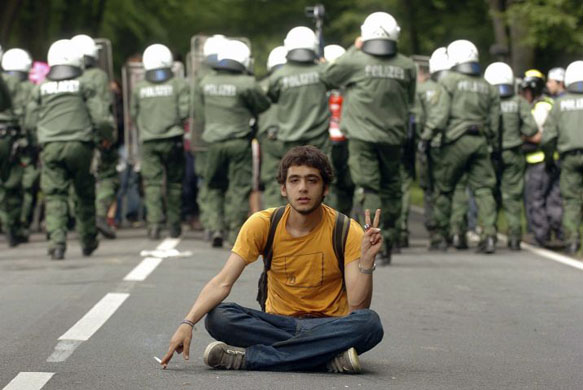 Not long ago I had a very interesting conversation via TweetChat with someone who is excellent at one thing, Branding. We talked about how many of us bloggers have a unique online persona, one we share with the “world” as it may and one that may be different than our random everyday personality. Good or bad, it does happen and if you do it right, this may just help you to succeed in the craziness of the online social media world.
Not long ago I had a very interesting conversation via TweetChat with someone who is excellent at one thing, Branding. We talked about how many of us bloggers have a unique online persona, one we share with the “world” as it may and one that may be different than our random everyday personality. Good or bad, it does happen and if you do it right, this may just help you to succeed in the craziness of the online social media world.
From the feedback I received I realized that this idea is hardly new. Since the dawn of Hollywood and before, people have been using their public image to enhance their brand. I may not be a movie star, but many of the same techniques still apply. As a PR person, I learned many of these tricks and tips in school and thought I would now share them with you. So here is just a quick refresher on how to use your online identity (public persona) to help solidify your brand.
1. How important is a name? If you make a point to use your full name in all of your online interactions, that’s great…but remember that not everyone will agree and using your real name can inadvertently create enemies. As long as you remain thick skinned, this should be alright though. Another important thing to remember – if you use your name, all of your revelations whether they are professional or a rant against an insane boss are all linked to you. This can come back to bite you so if you choose to use your real name….be aware of the consequences that come with it. It is a good idea to go ahead and purchase your own domain while you’re at it. (oh and if you are curious…Google yourself and see what comes up – apparently I am an exotic dancer/stripper in Texas….who knew?)
2. According to Erik Qualman (@equalman) the author of the incredibly awesome book, “Socialnomics” , if you choose to develop your online brand based on a singular persona, (real or not) it is very important to have a singular image across all of your social media outlets. This may be a logo or even a picture. I really had no idea that one image could be that important, and then I felt silly since this is one of the first things hammered into your head in all advertising and marketing classes. We are a visual species, and more than remembering what is written, we will remember an image whether it is on Facebook, Twitter, MySpace, FriendFeed or a blog. Therefore, pick an icon/image/photo that truly represents your brand and use it across the web. Soon, those who are interested in you and what you stand for will begin to read your online responses, or notice your “ads” simply because they see your icon, regardless if they are actually interested in the topic of the blog post or article.
3. No matter how “big” you become online, remember that you have a life…in the real world. When approached or contacted to speak, give presentations, be a guest-poster etc, remember that you are representing both your online persona (the person/brand the world is familiar with through your blog) and you as a person. If there is too much of a gap then your brand awareness could become tarnished. No one wants to feel they have been lied too or led on. While this may seem contradictory, one of the main things I have learned is that although I have deveoped a brand through my work online, I am still me and that is the person that I want people to respect.
Have thoughts? Has your personal brand ever interfered with your personal (off-line) life? Please feel free to share.




 Anyone familiar with conservation knows that there are those who prefer to make headlines rather than make actual headway on the issues. Not that these tactics don’t have their place – there are times when the only way to get attention for your cause is to make a
Anyone familiar with conservation knows that there are those who prefer to make headlines rather than make actual headway on the issues. Not that these tactics don’t have their place – there are times when the only way to get attention for your cause is to make a 
 Not to long ago I was asked to write a post about why I am glad I had to study social media. My former professor and blogging mentor currently teaches public relations and social media at the
Not to long ago I was asked to write a post about why I am glad I had to study social media. My former professor and blogging mentor currently teaches public relations and social media at the 



